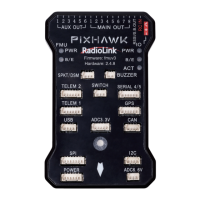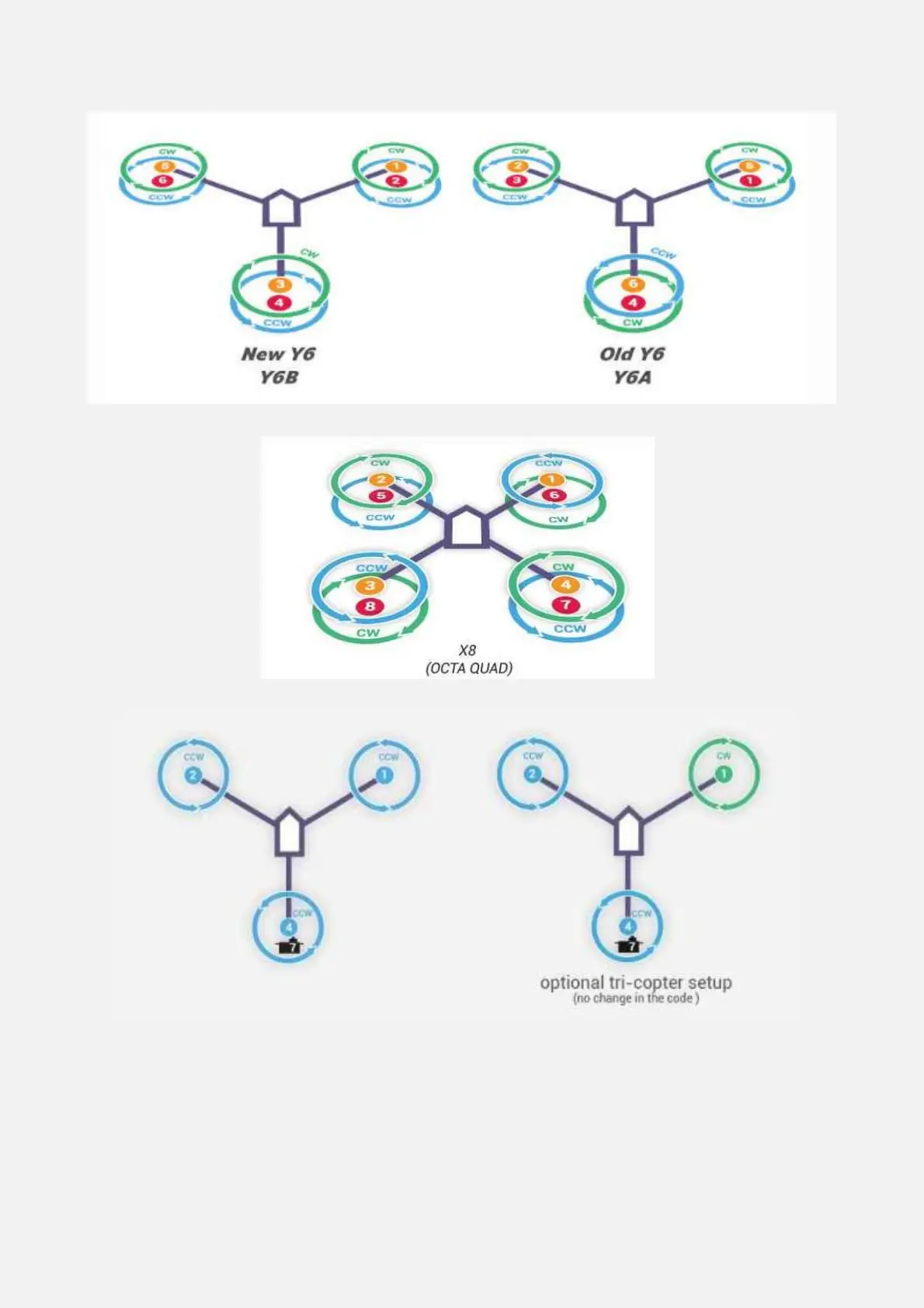Radiolink Electronic Ltd
www.radiolink.com
High GPS HDOP : the GPS’s HDOP value (a measure of the position accuracy) is above 2.0 and the vehicle
is in a flight mode that requires GPS and/or the circular fence is enabled. This may be resolved by simply
waiting a few minutes, moving to a location with a better view of the sky or checking sources of GPS
interference (i.e. FPV equipment) are moved further from the GPS. Alternatively, the check can be relaxed by
increasing the GPS_HDOP_GOOD parameter to 2.2 or 2.5. Worst case the pilot may disable the fence and
take-off in a mode that does not require the GPS (i.e. Stabilize, AltHold) and switch into Loiter after arming
but this is not recommended.
Note: the GPS HDOP can be readily viewed through the Mission Planner’s Quick tab as shown below.
INS checks (i.e. Accelerometer and Gyro checks):
INS not calibrated: some or all of the accelerometer’s offsets are zero. The accelerometers need to be
calibrated.
Accels not healthy: one of the accelerometers is reporting it is not healthy which could be a hardware issue.
This can also occur immediately after a firmware update before the board has been restarted.
Accels inconsistent: the accelerometers are reporting accelerations which are different by at least 1m/s/s.
The accelerometers need to be re-calibrated or there is a hardware issue.
Gyros not healthy: one of the gyroscopes is reporting it is unhealthy which is likely a hardware issue. This
can also occur immediately after a firmware update before the board has been restarted.
Gyro cal failed: the gyro calibration failed to capture offsets. This is most often caused by the vehicle being
moved during the gyro calibration (when red and blue lights are flashing) in which case unplugging the
battery and plugging it in again while being careful not to jostle the vehicle will likely resolve the issue.
Sensors hardware failures (i.e. spikes) can also cause this failure.
Gyros inconsistent: two gyroscopes are reporting vehicle rotation rates that differ by more than 20deg/sec.
This is likely a hardware failure or caused by a bad gyro calibration.
Board Voltage checks:
Check Board Voltage: the board’s internal voltage is below 4.3 Volts or above 5.8 Volts.
If powered through a USB cable (i.e. while on the bench) this can be caused by the desktop computer being
unable to provide sufficient current to the flight controller - try replacing the USB cable.
If powered from a battery this is a serious problem and the power system (i.e. Power Module, battery, etc)
should be carefully checked before flying.
Parameter checks:
Ch7&Ch8 Opt cannot be same: Auxiliary Function Switches are set to the same option which is not
permitted because it could lead to confusion.
Check FS_THR_VALUE: the radio failsafe pwm value has been set too close to the throttle channels (i.e.
ch3) minimum.
Check ANGLE_MAX: the ANGLE_MAX parameter which controls the vehicle’s maximum lean angle has
been set below 10 degrees (i.e. 1000) or above 80 degrees (i.e. 8000).
ACRO_BAL_ROLL/PITCH: the ACRO_BAL_ROLL parameter is higher than the Stabilize Roll P and/or
ACRO_BAL_PITCH parameter is higher than the Stabilize Pitch P value. This could lead to the pilot being
unable to control the lean angle in ACRO mode because the Acro Trainer stabilization would overpower the
pilot’s input.
Disabling the pre-arm safety check

